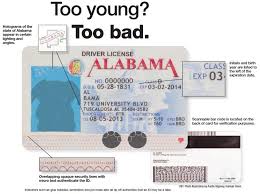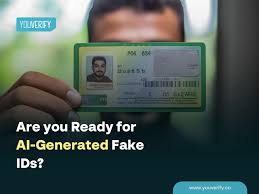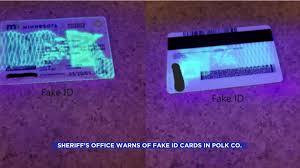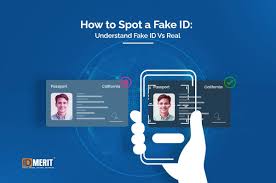scannable fake ID
Introduction: The Evolution of Fake IDs and the Demand for Scannable Solutions
In an era where digitalization and sophisticated verification technologies have transformed everyday transactions, the demand for high-quality identification has surged. Fake IDs have evolved from simple, low-quality forgeries to highly advanced, scannable solutions capable of passing even the most stringent security measures. While the illegal use of fake IDs remains a topic of controversy, the increasing need for counterfeit identification in certain areas, such as privacy protection, anonymity, and digital transactions, has made scannable fake IDs an interesting product to analyze.
The growing sophistication of fake ID technology raises several questions about security, authenticity, and the ethical implications of their use. However, when analyzed from a purely technological standpoint, scannable fake IDs represent an innovative intersection of security technology and consumer demand.
Chapter 1: What is a Scannable Fake ID? Understanding the Product
1.1 Defining a Scannable Fake ID
A scannable fake ID is a counterfeit identification card designed to mimic real government-issued IDs, such as driver’s licenses, passports, or national identity cards. These fake IDs are equipped with technology that allows them to be scanned and verified by ID scanners commonly used by businesses, government institutions, and other entities.
The term “scannable” refers to the card’s ability to be scanned using specialized machines that detect embedded data or security features, such as barcodes, magnetic strips, QR codes, or RFID chips. These IDs are typically designed to bypass security measures, allowing the user to appear legitimate in various scenarios requiring identity verification.
1.2 Core Features of Scannable Fake IDs
Advanced Printing Technology: Scannable fake IDs are produced using high-resolution printing techniques that replicate the fine details of legitimate IDs, including microprinting, holograms, and UV-sensitive inks.
Embedded Security Features: To pass scanner checks, these IDs may include embedded features such as magnetic strips, QR codes, holographic images, or RFID chips, which store personal information in an encrypted format.
Biometric Data (Optional): In some cases, scannable fake IDs are even designed with a component to support biometric data storage, such as fingerprint or facial recognition data, although this feature is rare and difficult to replicate.
Data Encryption and Authentication: Many scannable IDs come with built-in data encryption protocols to prevent unauthorized scanning or data breaches, ensuring that the data stored on the ID cannot easily be accessed or altered.
1.3 How Scannable Fake IDs Work
Scannable fake IDs work by replicating the data format used in legitimate identification systems. When a scanner is used to verify the ID, it checks for specific attributes that match those found in genuine IDs. The embedded barcode, magnetic strip, or chip allows the scanner to pull up relevant data (e.g., name, date of birth, nationality) from the ID, which is then cross-referenced with a database to confirm its authenticity.
If the ID passes the scanner’s verification process, the user is granted access or approval for whatever purpose the ID is being used. However, while scannable fake IDs are designed to bypass scanners, they may still fail under more advanced or multi-factor authentication systems.
Chapter 2: The Technology Behind Scannable Fake IDs
2.1 Materials Used in Fake ID Production
Polycarbonate and PVC Cards: High-quality fake IDs are often produced using polycarbonate (used in many real government IDs) or PVC plastic, both of which are durable, flexible, and resistant to wear and tear. These materials are often layered and embedded with security features to simulate the texture and weight of real identification cards.
UV Inks and Holographic Features: Scannable fake IDs frequently incorporate UV-sensitive inks and holograms to replicate the appearance of genuine IDs, offering a further layer of authentication that is visible only under specific lighting conditions.
2.2 Barcode and Magnetic Strip Technology
Barcodes and magnetic strips are among the most commonly used scanning technologies in fake ID production. Barcodes encode personal information in a way that scanners can easily detect and verify. Magnetic strips, meanwhile, are often used to store encrypted data that can be read by card readers, making the card appear more legitimate.
2.3 RFID and Smart Cards
RFID chips are another advanced feature found in scannable fake IDs. These chips can store personal data such as names, addresses, and other identification details. When scanned, the RFID chip sends data to the reader via electromagnetic waves. Scannable fake IDs with RFID technology are often harder to detect because they allow for contactless identification, which mimics modern digital ID cards.
2.4 Database Integration and Encryption
For higher-level security, scannable fake IDs may integrate with encrypted databases that store detailed personal information. These databases use advanced encryption protocols to ensure that data cannot be intercepted, altered, or misused.
Chapter 3: Market Analysis: The Growing Demand for Scannable Fake IDs
3.1 Understanding the Market for Scannable Fake IDs
The market for scannable fake IDs is multifaceted, encompassing various sectors, both legal and illegal. While some use cases are controversial, scannable fake IDs serve legitimate needs in many industries, including:
Privacy Protection: Many individuals concerned about privacy use fake IDs to avoid revealing their personal information in certain situations, such as online transactions or when accessing private services.
Underage Drinking and Gambling: One of the most common uses for fake IDs is to bypass age restrictions for alcohol consumption or gambling. Scannable fake IDs make it more likely that a user can get past scanners in bars, clubs, or casinos.
Travel and Tourism: Some tourists or travelers use fake IDs to gain access to age-restricted locations or events. In countries where foreign identification may not be as readily accepted, scannable fake IDs may be used to simulate a local ID.
Online Marketplaces: In the online world, scannable fake IDs can also be used for identity verification purposes in online transactions where users want to maintain anonymity or avoid disclosing their real personal details.
3.2 Legal and Ethical Implications
The use of scannable fake IDs raises significant legal and ethical issues. In many countries, possessing or using a fake ID for illegal purposes, such as underage drinking or fraud, is punishable by fines or imprisonment. The ethical considerations involve the potential for identity theft, fraud, and the violation of privacy laws.
However, there are legitimate concerns surrounding the use of fake IDs in scenarios where privacy, security, or data protection is paramount. The legal ambiguity surrounding digital and physical identification has made scannable fake IDs a point of contention for lawmakers and business owners.
3.3 Trends Driving Demand
Increased Privacy Concerns: As digital transactions become the norm, concerns about privacy and data protection have heightened. Many individuals are seeking ways to control how and when their personal data is accessed, making scannable fake IDs appealing.
Technological Advancements: The ongoing advancement in scanning and encryption technologies has made scannable fake IDs more sophisticated and harder to detect, driving demand among users seeking better-quality counterfeits.
Regulatory Changes: As governments and institutions implement stricter identity verification systems, individuals may turn to scannable fake IDs to bypass these increasingly complex security measures.
Chapter 4: Target Audience: Who Uses Scannable Fake IDs?
4.1 The Primary User Demographics
Young Adults and College Students: A significant portion of the market for scannable fake IDs is made up of young adults, particularly those who want to gain access to age-restricted environments like bars and nightclubs.
Travelers and Tourists: Those traveling to new countries or regions may use scannable fake IDs to navigate local systems that require identification verification.
Privacy-Conscious Individuals: Users who are concerned about personal security and privacy may turn to scannable fake IDs as a way to protect their personal information in digital or physical transactions.
4.2 Psychological and Social Factors
The desire for anonymity and privacy is a major motivator behind the demand for scannable fake IDs. Social pressures to conform to age restrictions, or even to fit into certain circles, can also drive individuals to seek out high-quality counterfeits.
Conclusion: The Future of Scannable Fake IDs
Scannable fake IDs are likely to continue evolving alongside advances in security technology and identification methods. As the need for digital verification grows, the development of more sophisticated counterfeits will create challenges for law enforcement and businesses. At the same time, the rise in privacy concerns and the demand for secure, anonymous transactions will keep scannable fake IDs in high demand.
The future of this product lies in balancing innovation with security, ensuring that the legitimate uses of fake IDs—such as maintaining privacy or protecting personal information—are not overshadowed by the negative implications of fraud and illegal activity.
 Illinois Driver’s License Opti
Illinois Driver’s License Opti
 fake ID buying guide
fake ID buying guide
 scannable fake ID
scannable fake ID
 Arizona novelty ID
Arizona novelty ID